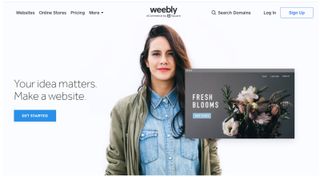In October 2011 Keir Whitaker and Elliot Jay Stocks started work on Insites: The Book. Over the course of the next six months, they travelled the US and the UK to meet and chat with 21 of the web and tech industry’s leading figures.
Focusing on personal journeys, big wins, and lessons learned, along with the kind of tales you’ll never hear on a conference stage, Insites: The Book is a unique look at the people shaping our industry. Each and every person has an amazing story to tell — a story we can all relate to, because even the biggest successes have the smallest, most humble of beginnings.
The following extract is from their conversation with Simon Collison. Colly, as he's more commonly known, has seen many sides of the web industry, from founding the acclaimed Erskine Design to organising Nottingham's finest web event New Adventures. Since conducting the interview Colly has become a full time proud member of Fictive Kin.
KW&EJS: With the web reaching maturity, what is the current state of our industry, as you see it, compared to when you started?
SC: In the beginning we were all finding our way. The web was a means to an end; you either had a website or you didn't. Most of us didn't go off and commission one. I had my own arts organisation at the time and needed a website, so I stumbled into it accidentally. I didn't see it as an industry at the time.
I reckon we've had an industry since web standards really took hold and we got behind that as a revolution, appreciating that we needed order amidst all the chaos. That gave us a framework, rules and the ability to check our work against criteria.
Fast-forward to now and I certainly see it as a mature industry. I don't like to hear people describe the internet as 'young' or 'immature' because it's been around for twenty years in some form or another. The last ten years in particular have been incredible in terms of the industry 'growing up'.
My first job was the end of 2002. I was finally employed as a web designer and I didn't quite know what to do — there was no way of checking against anything; you had to just take things on face value. We didn't necessarily realise that people were struggling to consume the information we put out, or that there were people with certain disabilities who were struggling to access everything we put on the web. We were very naive, whether that comes from our lack of training or the fact that we were self-taught and were picking stuff up as we went along.
My employers were very thoughtful people who were really starting to care about the industry. It was obvious to everybody that we needed standards. The web wasn't incredibly well defined; we were thousands of explorers all heading in different directions, and at some point we needed to come together to define what we were doing.
Having a set of principles as a means to move forward was a revelation for everyone. Although Jeffrey Zeldman wrote Designing With Web Standards in which he articulated this very well, I think of it as a community decision. There were people who were already keen and eager for this sense of order; people who were already bringing that to their projects to find a more responsible way of working.
KW&EJS: Do you think the industry needs an official recognition of skills and training to move forward?
SC: I understand how it would help the perception of the web industry, but it seems a bit too ‘Big Brother’ for me; a little dictatorial. I can't imagine a lot of seasoned designers would rush to be a part of it. I think it would give a false impression of who was worthy or not in our industry. But above all, governing seems, to me, an impossibility. How would you define the rules for an organisation of web designers?
KW&EJS: How do you, as an individual, work out who's good enough to work with when we don't have those criteria or socially-accepted markers such as a degree?
SC: When I was first employed, I was taken on as a web designer and developer in mid-2002, when we didn't really have defined standards and it was arguable as to whether I was the right person to employ. All I'd done at the time was build one website — it happened to be for my arts organisation and it'd become very popular.
My potential employers asked what content management system I was using. I didn't know what one was! But they saw something in me that they thought was valuable. I think because I had skills beyond those they would expect from a designer, they took a risk and saw that I could offer other value to the company. I love the fact that people took a chance on me, so when I started my own agency and started employing, we'd try to word job descriptions so people wouldn't look at it and feel that they couldn't do certain things. We tried to phrase it in a way that made people feel comfortable or confident that they could bring something to the table.
In terms of assessing their ability, it's tricky because a lot of it is on faith. I employed a few people whose work wasn't great and not the best I saw during the interview process, but I could see risks taken, and I could see order. What would they be capable of in an agency environment, where they have deadlines and pressure and are surrounded by smart people? That was the risk I always wanted to take. There was only ever one time I had to get rid of somebody, but in almost all of the situations it paid off.
I very rarely delve into somebody's 'about' page or try to look for any qualifications. I'm not interested if somebody has a degree or not, I'm more interested in the personal appeal of somebody, perhaps from their personal website; how they write; what they write about. Are they interested in the industry? Are they curious? Are they inquiring into things, rather than accepting things at face value? Do they challenge the norm? The people who do are the people I find really interesting, and I think they're the people of most value on the internet — they’re the ones who are going to accelerate the growth of the internet.
You can read the full interview with Simon in Insites: The Book - available from 4pm GMT today in a very limited boxed paperback edition and popular digital formats. Join us on Facebook on Friday, 12pm, to be in with a chance to win one of five digital copies.




